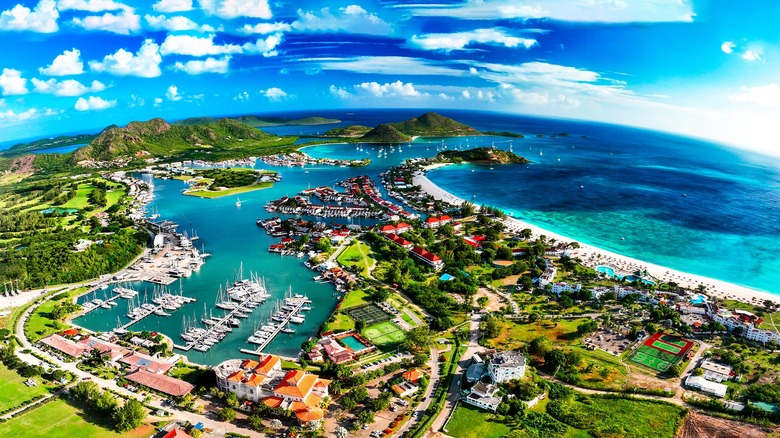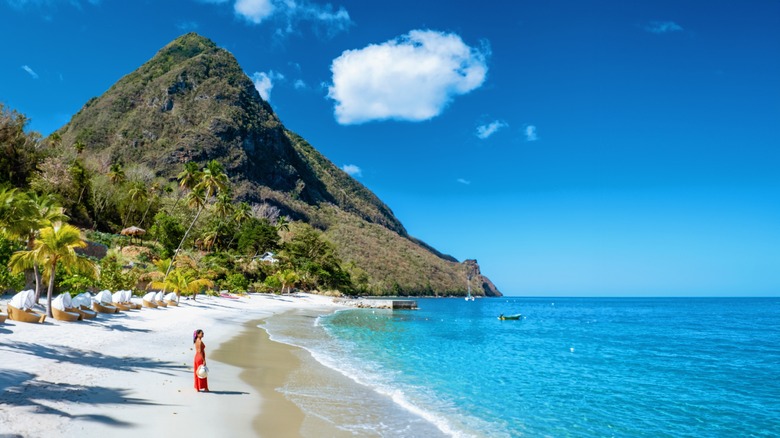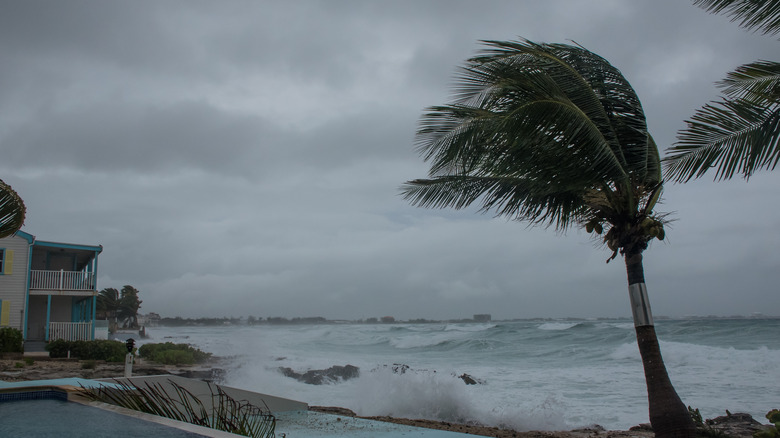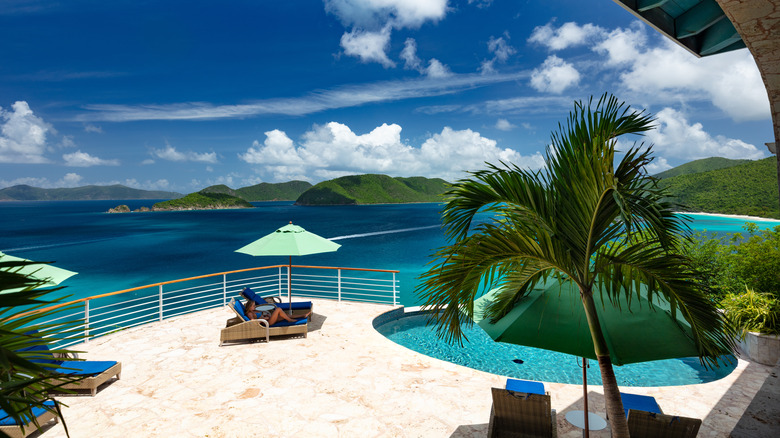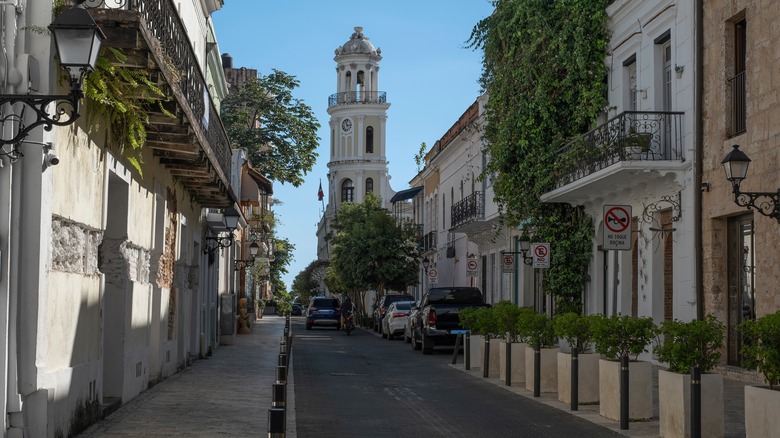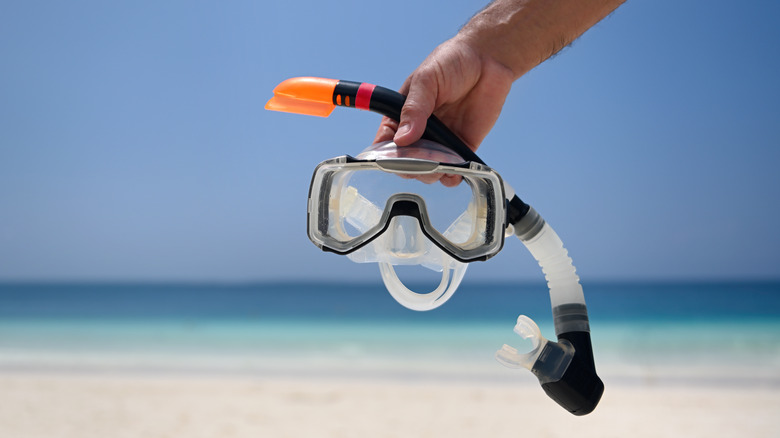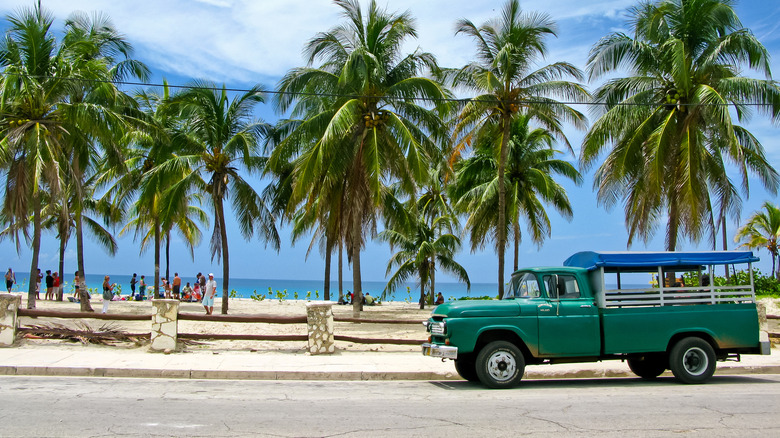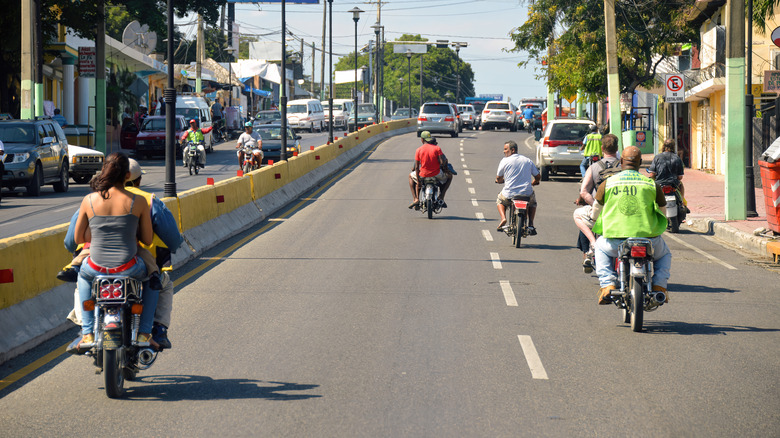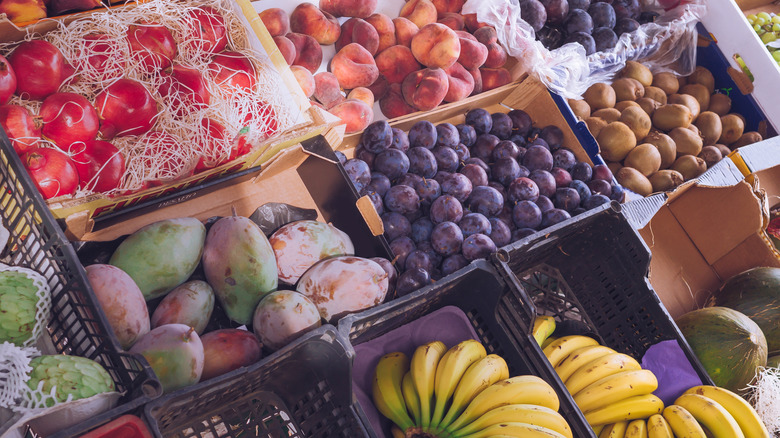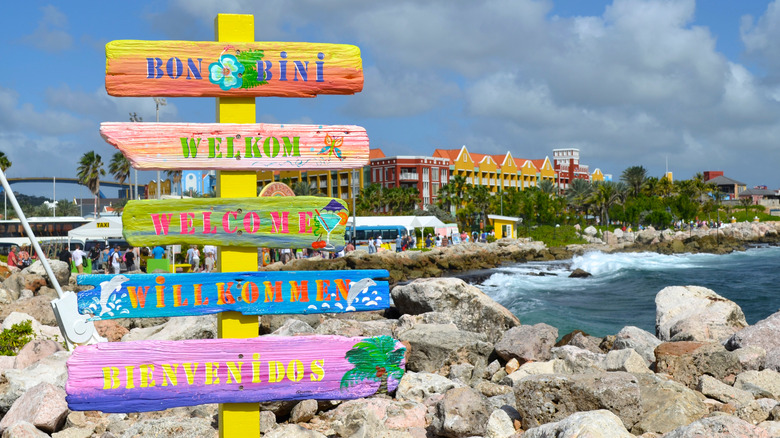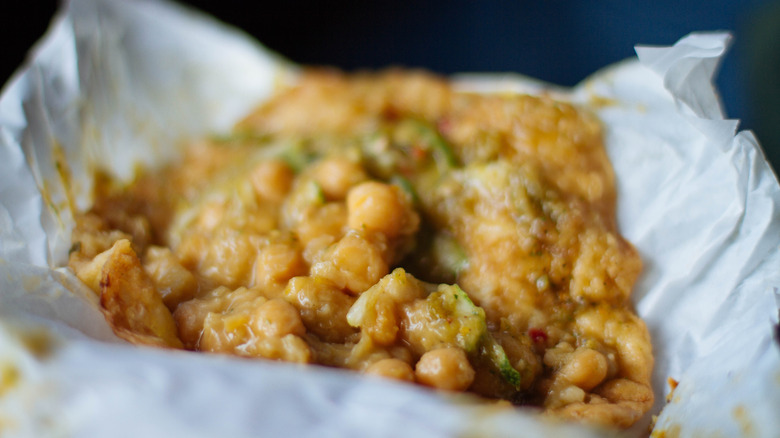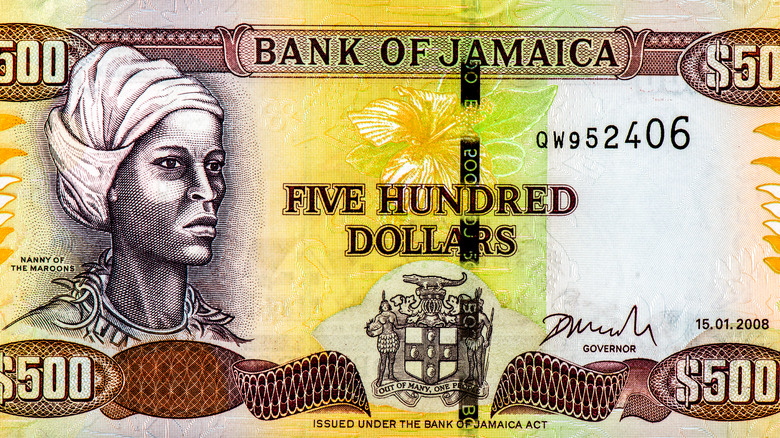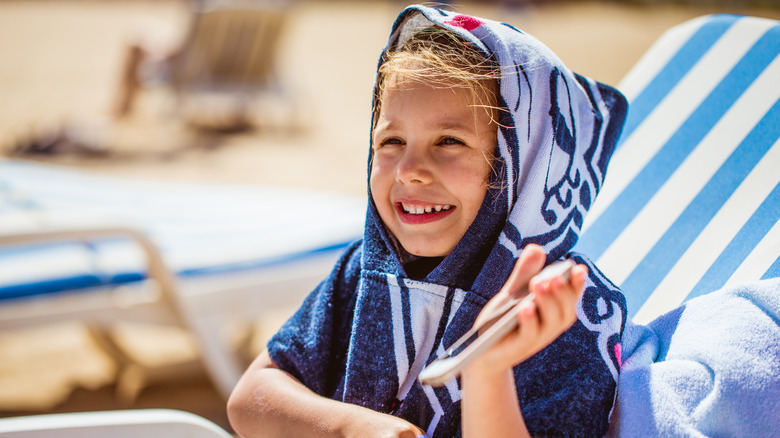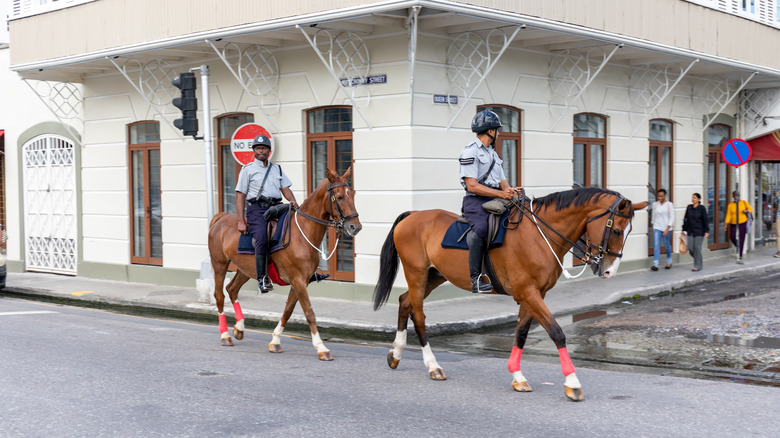Essential Travel Hacks For Your Vacation To The Caribbean
The Caribbean has long lured vacationers with its collection of thousands of islands and destinations around its namesake sea. The honeyed promise of sun, sand, and gorgeous water has helped make this area a popular beach destination. More than 30 million people visited the Caribbean in 2023, according to the Caribbean Tourism Organization. But traveling to the Caribbean, which, for our purposes, includes the Atlantic islands of the Bahamas and Turks and Caicos, takes preparation, foresight, and careful thought.
Travelers will want to consider several variables when determining their plans, starting with the variety of destinations in this area. I've visited more than 20 Caribbean islands, from those near Florida to just off the coast of Venezuela. I've stayed in all types of lodging across multiple trips, from luxury resorts to $10-a-night locally-owned inns where mice ran over my luggage. In my decades of going to the Caribbean, I've learned a thing or two about planning a vacation there and the special steps to take while putting together an itinerary. A little upfront research can make a massive difference to the overall quality of your experience.
Choose the right island for your travel goals
While some travelers might think all of the Caribbean is the same, that couldn't be further from the truth. Certain islands have beaches to melt the heart; others work better for hiking. Visitors should decide what they want from a trip and research the appropriate destinations. Will you prioritize going to the beach, snorkeling or diving, exploring rainforests, or maybe a specific culture? Do you need direct flights from the United States, or will a connection work for your situation?
Some islands are known for their excellent underwater environments, such as destinations like the Cayman Islands or Bonaire, with more than 50 dive sites accessible directly from the shore. Others have made a name for themselves with the food and drink they export around the globe. Rum may have originated in Barbados, and fans of the spirit might want to visit the island in homage. Beach lovers may opt to skip Dominica, which has a terrain better known for its volcanic peaks and verdant rainforests. Visitors who love the pulsing sound of merengue should head to the night spots of the Dominican Republic. The list goes on. Understand the variety in the Caribbean so that you can make the right choice for your vacation.
Pick the right time of the year
Each year, the Caribbean experiences hurricane season. This time of unpredictable skies, heavy rain, and potentially devastating winds runs from June through November. While not every day of hurricane season experiences this weather, it's a clearly enough defined meteorological event to have been given a name and an annual timetable. If you want the best weather, avoid visiting the islands then. If you're willing to gamble and like snagging a bargain, take a trip to the Caribbean during hurricane season. You'll find substantially lower hotel rates in many destinations during this calendar period, and some hotels close for repairs and maintenance. Alternatively, you can visit one of the Caribbean islands that remain safe from hurricanes.
Whatever time of year you pick, remember that special events occur across the islands. Visit during one, and you might struggle to get a hotel room or find cheap flights. Examples include Carnival in Trinidad, the liveliest celebration across the Caribbean. Held in February or March, depending on the dates of Easter, the streets explode with costumes, color, music, and revelry during this time. In the summer, Barbados comes to life during the massive fete known as Crop Over.
Work out a budget
Much like countries located on the same continent, the affordability between the different nations and territories of the Caribbean varies. Some islands have notably more expensive prices than others, with places like Barbados and the Cayman Islands high on the list. Others are much more affordable and can provide better options for travelers looking for accommodations on a budget. While any trip consists of a choreography of moving parts, understanding what you can spend in the Caribbean will help you narrow your focus on a destination. It will also help you decide the ideal kind of accommodation, experience, and trip length for your vacation.
Generally, all-inclusive resorts are more expensive than comparable businesses that don't include all meals, drinks, and activities in the price of the stay. Visiting during the high season or when a special event takes place will be more pricey than rolling in during less busy periods. Cheaper destinations in the Caribbean include Cuba, the Dominican Republic, Jamaica, and Puerto Rico, while travelers looking to burn through cash should consider the aforementioned Barbados and Cayman Islands, as well as Antigua, St. Barts, and the British Virgin Islands.
Consider a truly local experience
Deciding the kind of vacation you want is essential early in the planning process. Of course, budget will play a role, but it's not the only variable. You can stay in a resort, where the vacation centers more on cocooning yourself away and taking a break. This is especially true if you book one of the many all-inclusive Caribbean resorts like those found in Punta Cana, in the Dominican Republic. You might also consider a small property run by islanders like Jakes in Treasure Beach, on the south coast of Jamaica, or Secret Bay in the wilds of Dominica. This accommodation type might not have as many amenities as a large resort, but you can get a feel for the local environment.
Alternatively, you can travel independently and stay in a vacation rental. This will allow you to have an authentically local trip, whether in a small house among cacti in Aruba or a Creole home in Guadeloupe. Your vacation rental might be in an area without tourists and require that you shop in a local supermarket and perhaps prepare your own meals. While you might not have the pampering experience afforded by a plush resort, this type of set-up will make you feel almost like you live in the destination. How cool is that for a travel lover?
Bring your own snorkel gear
Bring your own gear if you plan on spending a lot of time in the water and want to snorkel — the Caribbean has some of the best islands for snorkeling in the world, making the sea one of its greatest lures. Specifically, pack your mask and snorkel. Fins are less critical (bring them if you have space), as they don't affect your viewing experience. A good-fitting, tried-and-tested mask can make all the difference between a ho-hum time in the water and great snorkeling memories. Imagine following a turtle from a distance after spotting it gliding beneath you. Suddenly, your mask begins to leak, and you have to stop your wildlife viewing to get the water out of your mask. That moment of magic can disappear because of untested, faulty equipment.
For hikers expecting to finish lots of treks in the Caribbean, pack proper hiking boots; sneakers won't do. You'll find amazing hikes in the Caribbean, such as the challenging trek to a boiling lake in Dominica or the scrambling climb up to Nevis Peak. When it comes to packing, you shouldn't need more than a carry-on for a week in the Caribbean, especially if you spend a lot of that time at the beach. The dress code is blessedly relaxed, and nobody will judge you for repeatedly wearing the same outfit. Just remember to bring boring essentials like sunblock and bug spray.
Don't expect the Caribbean to run on your timetable
The Caribbean has a commonly accepted sense of "island time." While not wholly unique to the area, it recurs there with frequency. Under this chronological framework, things run a little slower, and punctuality frees itself from its normal confines. This can be a frustrating state of affairs, especially if you have an A-type personality and expect everything to run like clockwork. But getting upset by island time is pointless; it would be like trying to push back the tide.
You have to embrace this and accept it as part of your vacation. Otherwise, you might find yourself blowing a gasket over and over again. For example, you might be waiting for a bus and decide to ask a local when it will arrive. They might simply reply, "In a little while," without specifics. That little while could turn into 30 minutes because time beats to a different drum in the Caribbean. Island time extends to many facets of life in the area, from when you have an appointment with someone like a tour guide to how long the food you've ordered takes to get to your table. Take a deep breath, drink in the surroundings, and remember, you are on vacation, not rushing to finish a race.
Book the appropriate transport
Getting out and about on an island is one of the joys of a vacation. Even if you stay in an all-inclusive resort, exploring beyond the property will enrich the trip and give you a better appreciation of the destination. An easy option is to book a tour with a local guide and see parts of the island that you might not otherwise experience. For a bit more impromptu excitement, where getting lost is part of the thrill, I'd wholly suggest exploring an island on your own.
It's much more exciting to stumble across something new and unexpected on your Caribbean vacation than to have it pointed out. Plus, you won't be tied to someone else's timetable, so you can pick and choose how much or how little time you want to spend in a place. You can also visit a popular tourist spot when it's quiet when all the tours have yet to arrive or have already left.
If you visit a large island such as Jamaica, you will need to rent a car. However, a scooter will be sufficient for a smaller island like Grand Turk. Getting around on two wheels is liberating and a lot of fun. Another option is to use public transport. Aruba, for example, has an excellent, reliable bus network, and navigating the island on it is a breeze.
Don't assume stores stock the same products as those at home
Just because the Caribbean is close to the United States — the West End of Grand Bahama Island is only about 60 miles off the coast of Florida — don't assume that the shops and restaurants there will offer the same products. You might find some familiar foods, toiletries, and household items, but probably not the full selection you've grown accustomed to. Supermarkets could have items from South America, or if they are a current or former territory, goods from their (once) connected country.
Visitors to Curaçao, for example, will find Dutch cheese, snacks, and chocolate available in stores, whereas French pastries appear in a boulangerie in Martinique. If you use a particular item regularly and must have it on vacation — a type of face cream or a specific toothpaste or snack you can't bear to live without — bring it with you. Alternatively, you can also take this opportunity to make do with what's available at your destination, to adapt and accept that not everything will be like it is back home. These types of experiences can further enrich an already memorable getaway.
Learn a little of the local lingo before you go
Many Caribbean destinations speak English — generally former and current colonies or territories of the United Kingdom and United States. But there are others where English is not the lingua franca. Most residents of the Dominican Republic use Spanish, while multiple islands rely on French as their primary method of daily conversation. You'll also encounter hybrid languages, which attest to the cultural influences that shaped societies. That's why Papiamentu is spoken in Aruba and Curaçao. It's a melange of Portuguese, Spanish, Dutch, French, African languages, and even Arawak, and it can be hard to place on the first listen.
On the islands where English isn't widespread, people who deal with tourists regularly (hoteliers, car rental agents, restaurant staff) will likely have at least a basic grasp of it. So, while you don't need to learn another language to travel to Bonaire or St. Barts, learning a few phrases will significantly boost your connection with locals. You don't have to be fluent, but knowing how to say things like "good morning," "good night," "please," and "thank you" shows that you have made an effort to learn about another culture. Plus, it always feels good to know a little bit of another language, whether you use it or not.
Try home-grown foods instead of chain restaurants
There's something so deflating about traveling abroad and eating only at restaurants that you can find back home. While in a foreign environment, chomping down on a dish widely available in the U.S. can feel comforting, but you'll miss out on the local riches. The Caribbean has fascinating food, some unique to certain islands, and great local produce. Even picky eaters should consider leaving their comfort zones and trying some of these offerings. You will see a whole new side of the Caribbean and might even grow to love the new-found tastes.
Trinidad, for instance, birthed doubles. Influenced by Indians who came to Trinidad, it pairs puffy bread with spiced chickpeas to create a filling street food found all over the island. Conch fritters are a beloved Bahamian dish, while the stew and polenta-esque dish fungee and pepperpot is a favorite in Antigua and Barbuda. Jamaica has jerk chicken, Puerto Rico has mofongo, and Grenada has oildown. While in the Caribbean, don't miss the chance to try local fruits and vegetables, such as breadfruit, callaloo, dasheen, soursop, ackee, and mamey sapote.
Use local currency instead of U.S. money
While many places will accept credit and debit cards for payment, some will not. The prevalence of contactless transactions, even after COVID-19, has not reached everywhere. For instance, smaller shops, street vendors, local markets, and taxis might only take cash. They might all accept U.S. bills, but you won't necessarily get a favorable rate and may have to settle on a terrible conversion. That reality makes carrying some local cash crucial wherever you go. Although several islands use the Eastern Caribbean dollar, currencies vary between countries, including Anguilla, St. Kitts, Saint Lucia, and St. Vincent.
Puerto Rico and the U.S. Virgin Islands use American money. But go to the Dominican Republic, and you'll need to carry Dominican pesos, while in Jamaica, it's the Jamaican dollar. Cash is also a good choice when tipping (carry small bills), and buying souvenirs. Avoid tourist shops near cruise terminals or large resort areas, where you'll likely run into inflated prices. Opt instead for local markets. They might not stock tourist T-shirts or key chains, but you can find more interesting and reasonably priced items for sale, such as spices, artwork, pepper sauces, and model boats.
Cover up and drink lots of water
While the sun is one of the main selling points of the Caribbean, it can also be brutal. The closer a destination is to the Equator, the more potent the sun's rays are and the higher the ultraviolet index. This means you need less sun exposure to suffer from sunburn. Near the coast, a traveler might not feel the effects of the sun as much, as the breeze tempers the heat. But the sun's caustic impact is very much there, even on a cloudy day. Sun damage is worsened by the sea, where the water reflects the ultraviolet light.
Generally, visitors to the Caribbean should try to minimize the time in direct sunlight between 11 a.m. and 4 p.m. At all times, confusing as it might sound, you should cover up to protect your skin rather than wear less to feel cooler. This means loose, flowing clothing that covers your skin while allowing air to reach it. Sun protection is key, from polarizing sunglasses to good sunblock and a wide-brimmed hat. Find shade on the beach; don't roast in direct sunlight. Drink lots of water — not alcohol — or coconut water since hydration is as vital as skin protection.
Remain alert and drop the valuables from your packing list
It's easy to enter vacation mode when on holiday. But it would be best if you did not switch off. Remember, you should always remain aware of your surroundings in a foreign environment. Avoid entering any unfamiliar location after dark, and leave the expensive jewelry at home. Certain countries rank among the most dangerous in the Caribbean, and others have a reputation for safety. According to the U.S. Department of State, which regularly updates travel advisories on its website, travelers should avoid some nations altogether.
Even islands that generally seem safe can have no-go zones you'll want to steer clear of. On New Providence Island in the Bahamas, for instance, a part of Nassau has a reputation for gang violence. Use common sense when taking any trip, which is wisdom that certainly applies to the Caribbean, too. Many travelers head to this part of the world to enjoy its natural wonders, the sea, the sand, and the scenery. If that's your goal, do you really need to bring glitzy jewelry, designer clothing, and the latest gadgets on a trip?
